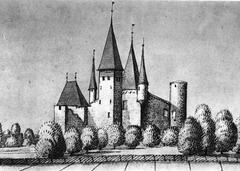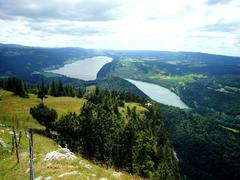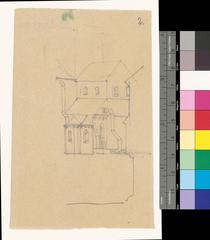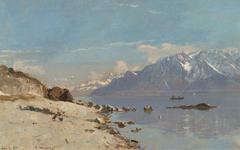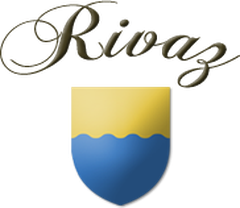
Payerne Airport: Comprehensive Visiting Hours, Tickets, and Travel Guide in Canton Vaud, Switzerland
Date: 04/07/2025
Introduction
Payerne Airport, officially known as Payerne Air Base (IATA: VIP, ICAO: LSMP), is an exceptional aviation landmark in the Canton of Vaud, Switzerland. Renowned for its rich military legacy and pioneering role in civil and sustainable aviation, Payerne is strategically located between Lausanne and Bern. Its evolution from a key military stronghold to a focal point of aerospace innovation and regional economic growth makes it an unmissable destination for aviation enthusiasts, history lovers, and travelers seeking authentic Swiss experiences.
The airport’s significance is rooted in its foundational role in Swiss national defense, particularly during World War II and the Cold War. Today, it remains Switzerland’s largest air base, hosting both elite Swiss Air Force squadrons and innovative civil aviation activities. The adjacent Swiss Aeropole technology park further positions Payerne as a hub for aerospace research, business aviation, and sustainable technology, attracting global attention with projects such as the Solar Impulse solar-powered flights.
This guide delivers detailed information on visiting hours, ticketing, guided tours, accessibility, and nearby attractions. It also explores Payerne Airport’s impact on regional development, tourism, and its integration of tradition, innovation, and natural beauty.
For up-to-date details, consult the Payerne Air Base official website, the Clin d’Ailes Aviation Museum, and the Swiss Aeropole.
Contents
- Introduction
- Historical Overview
- Notable Events and Milestones
- Visiting Payerne Air Base: Visitor Information
- Visiting Hours and Tickets
- Guided Tours
- Accessibility and Travel Tips
- Nearby Attractions
- Clin d’Ailes Aviation Museum
- Payerne Airport: Strategic Role and Regional Development
- Economic Impact
- Innovation and Technological Leadership
- Infrastructure and Facilities
- Sustainability Initiatives
- Community Integration
- Tourism and Visitor Experience
- Payerne Airport Visitor Guide
- Access and Entry Procedures
- Spotters’ Terrace
- On-site Services and Accessibility
- Events and Activities
- Practical Information
- Safety and Regulations
- Payerne Airport and Broye Region Historical Sites
- Regional Setting and Identity
- Cultural Heritage and Local Traditions
- Aviation Culture and Community Engagement
- Innovation and Regional Development
- Social and Economic Impact
- Integration with Regional Attractions
- Visitor Information and Accommodation
- FAQs
- Conclusion
- Sources
Historical Overview
Origins and Early Development
Founded in the early 20th century, Payerne Air Base was established to strengthen Switzerland’s defensive capabilities. Its expansive, flat terrain enabled the construction of long runways and comprehensive support facilities, quickly making it a linchpin of the Swiss Air Force (Payerne Air Base). During the interwar period and WWII, the base expanded to support training, maintenance, and rapid deployment, underpinning Switzerland’s policy of armed neutrality.
Cold War Expansion and Modernization
The Cold War saw Payerne’s runway extended to 2,800 meters—the country’s longest—accommodating the latest fighter jets and transport aircraft. The base became home to elite F/A-18 squadrons and advanced military aviation infrastructure, including retractable arresting gear and cutting-edge simulators. Its strategic importance solidified its status as the backbone of Swiss military aviation.
Contemporary Significance
Today, Payerne Air Base is Switzerland’s most important military airfield, supporting air policing, rapid reaction alerts, and investigative functions. It is unique for its integration with civilian aviation, featuring a taxiway connected to the A1 motorway for potential emergency use. The base also houses the Swiss Transportation Safety Investigation Board’s air division, cementing its operational and investigative leadership.
Notable Events and Milestones
- Air Shows: Payerne has hosted landmark events such as Air04 and Air14, the latter celebrating the Swiss Air Force centenary with international acclaim.
- Solar Impulse: The airport was the takeoff point for Solar Impulse 1’s 26-hour solar flight in 2010 and Solar Impulse 2’s first mission in 2014, highlighting sustainable aviation leadership.
- Business Aviation: Since 2019, Payerne has expanded civil operations, hosting Speedwings Business SA and the annual Swiss Private Jets Show, enhancing its dual military-civil profile.
Visiting Payerne Air Base: Visitor Information
Visiting Hours and Tickets
- Clin d’Ailes Aviation Museum: Open Tuesday to Sunday, 10:00 AM to 5:00 PM. Closed on select holidays. Tickets are available at the entrance and online, with discounts for children, seniors, and groups (Clin d’Ailes Museum).
- Payerne Airport: No fixed public visiting hours; visits by appointment only. Email the airport with your details to schedule a visit. A CHF 10 fee applies, payable by credit card upon arrival (Payerne Airport).
Guided Tours
- Museum Tours: Available on request, offering expert insights into Swiss aviation history.
- Air Base Tours: Occasionally organized during special events; advance booking required. Check with the airport or museum for availability.
Accessibility and Travel Tips
- Transport: Easily accessible by car via the A1 motorway. Regional trains connect Payerne to major cities; shuttle or bus services run during events.
- Accessibility: Facilities are equipped for visitors with reduced mobility, including ramps, accessible restrooms, and parking (Vaud Tourism).
- Tips: Bring valid ID, book in advance, and wear comfortable footwear. Respect security rules and photography restrictions.
Nearby Attractions
- Town of Payerne: Explore the medieval abbey, historic old town, and local markets.
- Broye Region: Visit Lake Neuchâtel, the Grande Cariçaie nature reserve, and scenic vineyards (MySwitzerland).
Clin d’Ailes Aviation Museum
Located on the air base, the museum presents a rich collection of Swiss military aircraft, including the Mirage III, Vampire, Venom, and Hunter. Interactive exhibits and flight simulators provide immersive experiences. The Espace Passion association also offers private flights in historic aircraft (Clin d’Ailes Museum).
Payerne Airport: Strategic Role and Regional Development
Economic Impact
Payerne Airport catalyzes regional economic growth, especially through the Swiss Aeropole technology park, which attracts leading aerospace and high-tech firms. Major employers like Boschung and Groupe E have established significant operations, generating skilled employment (Swiss Aeropole).
Innovation and Technological Leadership
The airport is a center for aerospace innovation, hosting projects like Solar Impulse and SolarStratos. Companies such as Destinus, developing hydrogen-powered aircraft, leverage the region’s infrastructure and talent (Innovaud – Destinus).
Infrastructure and Facilities
Modern infrastructure includes a dedicated business aviation terminal, hangars, and office space. The Fixed Base Operator, Speedwings, provides business aviation services, making Payerne attractive for both routine and experimental operations (Swiss Aeropole).
Sustainability Initiatives
Payerne is a leader in sustainable aviation, supporting solar and hydrogen-powered projects and encouraging eco-friendly business practices (Robert Wilko Aviation Scholarship).
Community Integration
Local ownership and collaboration with the Communauté régionale de la Broye (COREB) ensure that airport development aligns with community needs, supporting infrastructure improvements and regional quality of life (Swiss Aeropole).
Tourism and Visitor Experience
The airport’s events, museum, and regional setting attract both business and leisure visitors, supporting local hospitality and enhancing the area’s global profile.
Payerne Airport Visitor Guide
Access and Entry Procedures
Visits require advance booking by email. Present a valid ID upon arrival and pay the entry fee. Group visits and special access (e.g., for photography) must be arranged in advance (Payerne Airport).
Spotters’ Terrace
The terrace is a highlight for plane spotters and photographers, with clear runway views, seating, and information displays. Access requires advance arrangement.
On-site Services and Accessibility
Facilities include clean restrooms, accessible pathways, and helpful staff. The airport and museum are equipped to support visitors with disabilities.
Events and Activities
Annual airshows, open days, and exhibitions provide opportunities to see aerial displays, meet pilots, and tour aircraft. Check event schedules online (MySwitzerland).
Practical Information
- Location: Aéropôle 132, CH-1530 Payerne
- Transport: Well-connected by rail, road, and bus
- Language: French is predominant, but English and German are widely spoken
- Weather: Dress in layers; check forecasts before visiting
Safety and Regulations
Adhere to security rules, especially in restricted military zones. Supervise children, and note that pets are generally not permitted.
Payerne Airport and Broye Region Historical Sites
Regional Setting
Payerne lies within the fertile Broye region, bridging Vaud and Fribourg and close to Lake Neuchâtel. The area boasts a rich agricultural and cultural heritage (myswitzerland.com).
Cultural Heritage
Landmarks include the 11th-century Abbey Church (Switzerland’s largest Romanesque building), local markets, and annual festivals.
Aviation Culture
The region’s aviation identity is celebrated through the Clin d’Ailes Museum, airshows, and the spotters’ terrace.
Innovation and Development
The Swiss Aeropole fosters aerospace R&D, supported by direct runway access and a business-friendly environment.
Social and Economic Impact
Aviation and technology have transformed the region, boosting population, services, and cultural vibrancy.
Integration with Attractions
The airport is a launchpad for exploring the Grande Cariçaie nature reserve, medieval Avenches, and local gastronomic traditions.
Accommodation
Lodging options in Payerne and nearby towns range from hotels and B&Bs to lakeside resorts (MySwitzerland).
Frequently Asked Questions (FAQ)
Q: What are the visiting hours for Payerne Airport and Clin d’Ailes Museum?
A: The museum is open Tuesday–Sunday, 10:00 AM–5:00 PM. The airport is visitable by appointment only, usually during weekday business hours.
Q: How do I book tickets?
A: For the museum, purchase at the entrance or online. For the airport, arrange in advance via email.
Q: Are guided tours available?
A: Yes, at the museum (on request) and occasionally during airport events.
Q: Is the airport accessible by public transport?
A: Yes, via Swiss rail to Payerne, with local buses and taxis available.
Q: Can I take photos at the airport?
A: Allowed in designated areas like the spotters’ terrace; follow all posted restrictions.
Conclusion
Payerne Airport is a premier destination blending Swiss aviation history, innovation, and regional culture. Whether you’re exploring the Clin d’Ailes Aviation Museum, enjoying airshows, or discovering the Broye region’s heritage, Payerne offers a dynamic and enriching experience. Stay updated on visiting hours, tours, and events via official websites and the Audiala app, and immerse yourself in the vibrant world of Swiss aviation.
Sources and Official Links
- Payerne Air Base Official Website (https://www.vtg.admin.ch/en/organisation/air-force/airbases/payerne.html)
- Clin d’Ailes Aviation Museum (http://clindailes.ch/en/)
- Swiss Aeropole (https://www.swissaeropole.com/)
- MySwitzerland.com – Payerne (https://www.myswitzerland.com/en/)
- Payerne Airport Visitor Information (https://payerne-airport.ch/en/)
- MyVaud.ch – Payerne Museum of Military Aviation (https://www.myvaud.ch/en/P748/payerne-museum-of-military-aviation)
- IVAO Switzerland – Payerne Airport (https://ch.ivao.aero/airport-payerne/)
- Robert Wilko Aviation Scholarship (https://robertwilkosaviationscholarship.com/the-economic-impact-of-airports-on-local-communities/)
- Innovaud – Destinus Funding Announcement (https://www.innovaud.ch/en/general/news/2022/destinus-raises-chf-268-million-for-its-development)

